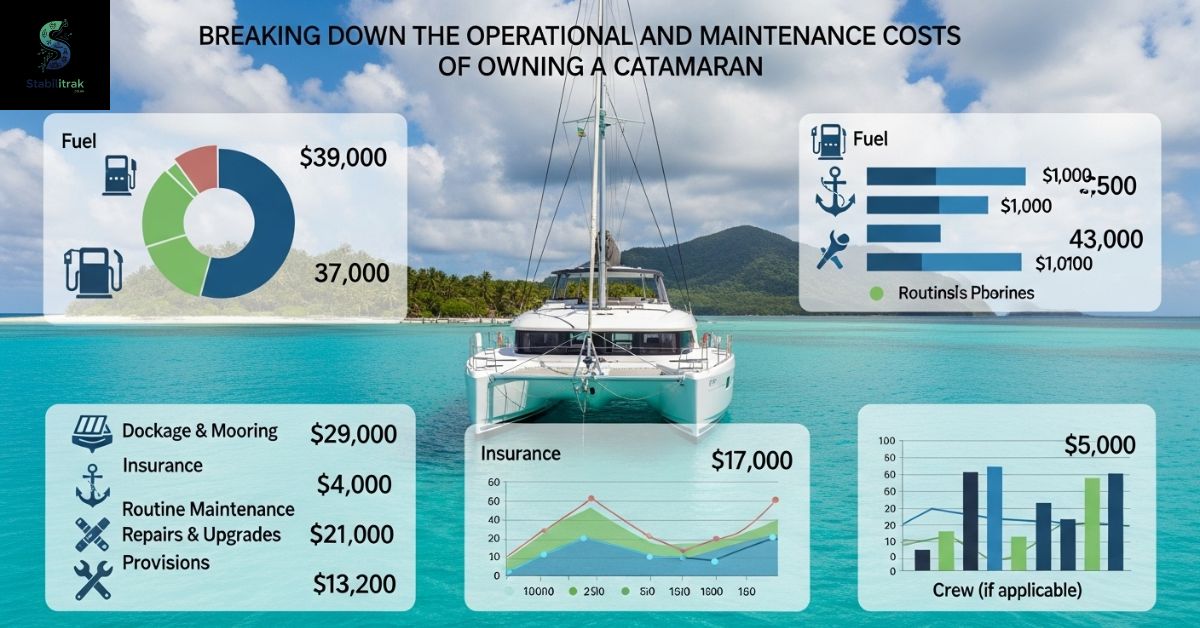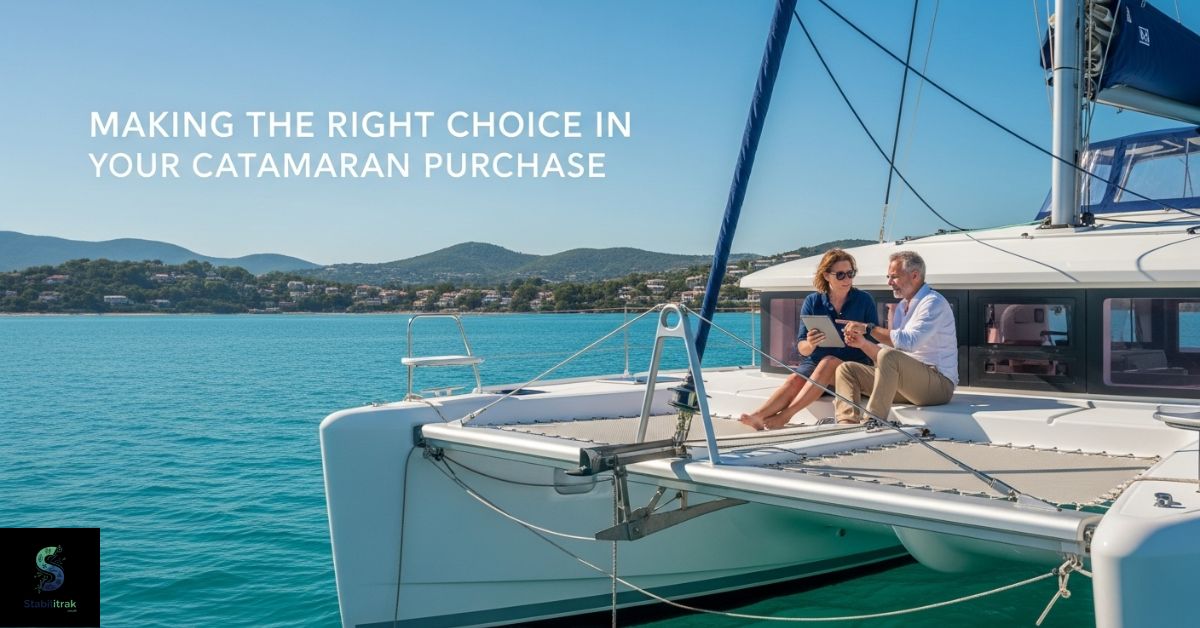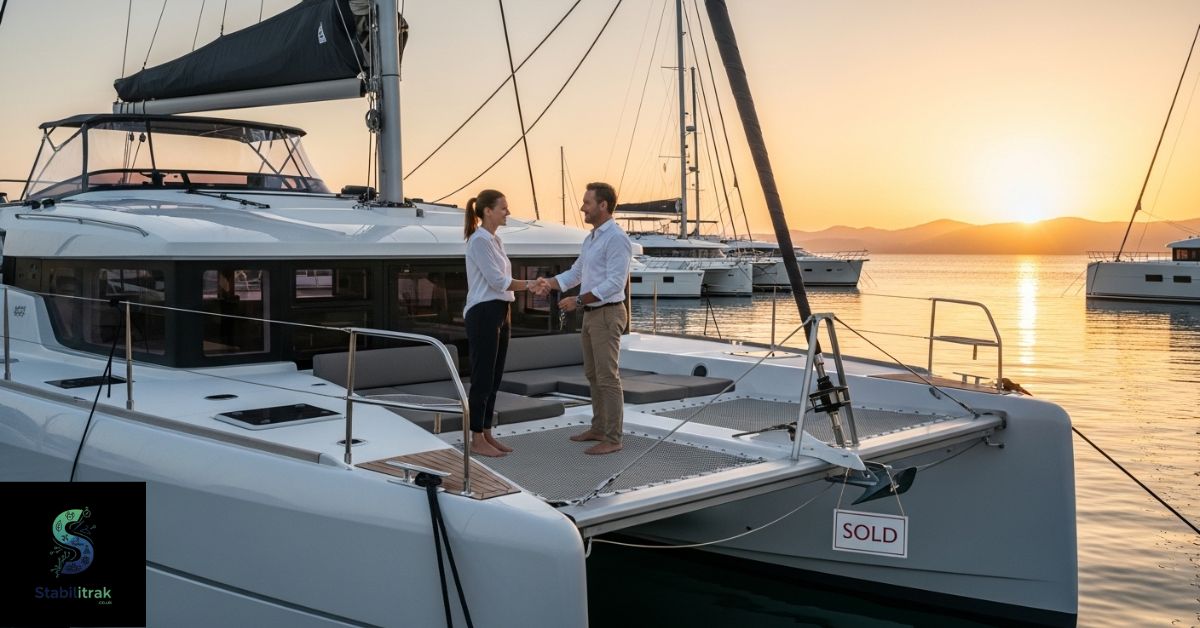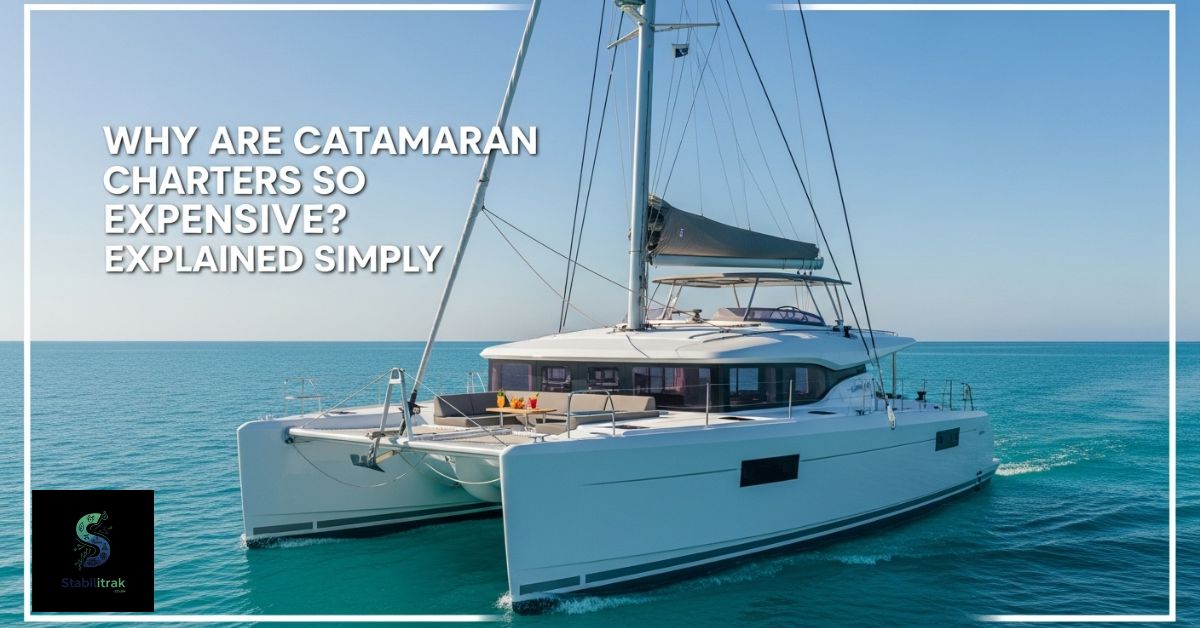Ever wondered why catamaran charters are so expensive? You’re not alone. Many travelers dream of a smooth, sun-soaked sailing trip only to be shocked by the price tag. It can feel confusing and frustrating when you’re trying to plan a vacation but don’t understand why the costs are so high.
This post will break it all down for you in simple terms. We’ll look at what actually drives up the cost of catamaran charters and help you see where your money goes. By the end, you’ll understand the real reasons behind the pricing and know how to make smarter choices for your next sailing adventure.
The Unique Design is One Thing That Makes the Catamaran So Expensive
A catamaran’s dual-hull design instantly sets it apart from its monohull counterparts. Those wide beams, spacious decks, and shallow drafts aren’t just for looks; they’re engineering features that increase stability at sea and allow access to secluded beaches. Building and maintaining this unique structure costs more from the start.
Unlike a single-hull boat, a catamaran requires double the molds, extra materials, and more complicated hydrodynamics calculations from naval architects. This complexity translates directly into higher manufacturing costs, which charter companies pass on to customers in the form of higher fees.
Craftsmanship and Materials of a Catamaran
Step aboard a modern catamaran, and you’ll see a floating masterpiece of skilled craftsmanship. Artisan woodwork, custom upholstery, and tailored interiors elevate the vessel from “boat” to “luxury sailing home.” Each detail requires highly trained specialists who charge premium rates for their time.
Unlike mass-produced vessels, catamarans often feature handcrafted joinery, gourmet kitchens, and designer lighting. These bespoke elements don’t just look good; they also drive up production costs and, ultimately, charter prices.
Advanced Materials
Modern catamarans rely on advanced materials like carbon fiber, epoxy resins, and high-grade fiberglass construction. These materials improve durability, reduce weight, and enhance performance, but cost significantly more than traditional boatbuilding components.
High-quality composite materials also require specialized production facilities. This isn’t a simple assembly-line product; it’s a precision-crafted, high-end vessel designed for stability and long-term value.
Skilled Labor
Behind every catamaran is a team of specialists, from naval architects and marine engineers to skilled craftsmen who shape the hull and interiors. Their expertise ensures safety, performance, and comfort on the water.
Skilled labor like this doesn’t come cheap. Catamaran charter companies pay for expert rigging checks, precise hull maintenance, and luxury finishes, all of which contribute to the premium cost you see as a customer.
The Comparisons: Catamarans vs. Yachts
Many travelers assume catamarans are simply wider yachts, but the differences go deeper. Catamarans offer expansive living quarters, multiple cabins with en-suite heads, and stability at sea that monohulls can’t match. These benefits raise both purchase and upkeep costs.
On the other hand, monohull sailboats are cheaper to buy and maintain, but can’t compete with the comfort and panoramic deck spaces of a catamaran. That’s a big reason charter companies price catamarans at a premium.
Chartering Options for Catamarans
There’s no one-size-fits-all in the catamaran world. You can choose a bareboat charter, where you skipper yourself, or a fully crewed catamaran charter complete with a seasoned captain and chef.
Crewed charters are particularly popular in destinations like the Virgin Islands and Greece. The personalized service, gourmet cuisine, and tailored itineraries all add to the cost but also to the experience.
Read More Article: How Long Can You Drive on a Spare Tire?
Breaking Down the Operational and Maintenance Costs of Owning a Catamaran

Owning a catamaran is far more than the purchase price. You’re also looking at insurance premiums, dock fees, hull maintenance, and routine rigging checks. All these costs must be covered even when the boat isn’t in use.
Charter companies recover these operational costs through their pricing. That’s why even off-peak catamaran charters carry a higher base rate than you might expect.
The Premium of Twin Engines
Most catamarans have two engines instead of one. This adds redundancy and safety but doubles the engine maintenance, fuel system complexity, and long-term upkeep costs.
Twin engines also mean higher fuel usage compared to a single-hull sailboat under power. While modern catamaran powerboats are fuel-efficient for their size, the twin-engine setup still increases overall expenses.
The Luxury and Customization Aspect
Chartering a catamaran isn’t just about transportation; it’s about experiencing a luxury vessel. Expect features like panoramic decks, designer lighting, cutting-edge entertainment systems, and even jacuzzis on larger models.
These high-end amenities are expensive to install and maintain. Every gourmet kitchen, custom interior, and hydraulic swim platform you enjoy at sea adds to the initial investment and ongoing costs.
Larger Berthing and Mooring Fees
A catamaran’s wide beam requires more marina space than a monohull of similar length. Many marinas charge double berth fees to accommodate these vessels.
Premium marinas in high-demand locations like St Thomas, BVI, and the Mediterranean can push these costs even higher. This, in turn, increases the charter rates you’ll see online.
Maintenance and Upkeep
Maintenance is a major factor in catamaran pricing. Hull cleaning, antifouling, sail replacements, and rigging checks all cost more for a dual-hull structure.
Charter companies must also factor in haul-outs, inspections, and emergency repairs. High maintenance schedules ensure safety and performance but inevitably raise the price of every charter.
Market Demand and Resale Value
Catamarans are in high demand worldwide. As more travelers seek the stability and space of multihulls, charter companies can command premium prices.
At the same time, catamarans hold their resale value better than many monohull counterparts. That investment perspective gives owners and charter companies more confidence in pricing at the higher end of the market.
Assessing the Value Proposition of Catamarans
It’s easy to get sticker shock at catamaran charter prices, but consider what you’re getting: stability at sea, spacious living quarters, and a premium sailing experience.
When you add in lower fuel consumption per passenger and a stronger resale market, the long-term value begins to make sense.
The Premium Experience on the Waters
A catamaran isn’t just a boat; it’s a floating beachfront apartment. With panoramic views, private cabins, and expansive aft cockpits, you’re paying for an unforgettable experience.
From Caribbean island-hopping to Mediterranean charters, catamarans offer a level of comfort and luxury monohulls simply can’t match.
Safety and Stability
For many travelers, safety and comfort are top priorities. The dual-hull design dramatically reduces rolling at anchor and seasickness underway.
This stability at sea is a huge selling point, especially for families or first-time sailors. It also justifies the higher price tag.
Investment Perspective
Some private yacht owners place their catamarans into charter fleets to offset ownership costs. High-week rates in peak season and consistent bookings can generate strong charter revenue.
With proper management, tax strategies, and maintenance, a catamaran can even offer a return on investment, something rare in the boating world.
Decoding the Price Tag of a Catamaran
When you break down the costs of construction, skilled labor, advanced materials, twin engines, mooring fees, and market demand, the high price starts to look reasonable.
Catamaran charters aren’t just transportation; they’re an all-inclusive luxury sailing experience that combines comfort, safety, and adventure.
Read More Article: How Ben Stace Uses Semantic SEO to Boost Rankings
Making the Right Choice in Your Catamaran Purchase

If you’re thinking about buying or chartering, start by defining your priorities. Do you want maximum comfort, or are you chasing traditional sailing thrills?
Test sails, boat shows, and consultation with yacht brokers or marine surveyors will help you make an informed decision.
Conclusion

So, why are catamaran charters so expensive? It’s a combination of innovative design, skilled craftsmanship, high-quality materials, operational costs, and soaring demand.
But with that price comes unmatched comfort, stability, and luxury on the water. Whether you’re booking a week-long trip or considering ownership, understanding these factors helps you see the true value behind the numbers.
FAQS
Why are catamarans so much more expensive?
Catamarans cost more because of their dual-hull design, advanced materials, and higher construction and maintenance expenses compared to single-hull boats.
Why is it so expensive to charter a yacht?
Yacht charters are costly due to high operating costs, skilled crew salaries, luxury amenities, and premium docking fees.
What is so special about a catamaran?
Catamarans offer unmatched stability, spacious living areas, and easy access to shallow waters that most monohull boats can’t reach.
What is the disadvantage of catamarans?
They’re wider, need larger berths, and cost more to maintain and dock than traditional sailboats.
Is a catamaran safer than a yacht?
Generally, yes, catamarans have a more stable design and are less likely to roll, making them safer for families or first-time sailors.
Do catamarans have a toilet?
Yes, most catamarans come with multiple bathrooms (“heads”) equipped with toilets and sinks.
How do catamarans handle rough seas?
Their twin-hull design reduces rolling and offers stability, but very rough seas can still affect comfort and speed.
Where does toilet waste go on a catamaran?
Waste is stored in holding tanks, which are pumped out at designated marina facilities or treated onboard before disposal (where legal).
What do people wear on catamarans?
Light, breathable clothes, swimsuits, non-slip shoes, hats, and sunscreen are common choices for comfort and safety.


1 thought on “Why Are Catamaran Charters So Expensive? Explained Simply”